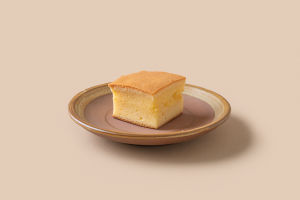Gelatin desserts, or jelly, are a fun and versatile treat loved by people of all ages.
From fruity, colorful creations to elegant, clear desserts with a subtle wobble, jelly offers endless possibilities for personalization.
Despite its simplicity, making jelly that’s smooth, flavorful, and with just the right texture requires a few essential techniques and tips.
This guide will cover everything you need to know, from choosing the right ingredients and preparing your jelly to adding exciting flavors and presentation ideas. Perfect for summer gatherings, children’s parties, or a light dessert after dinner, homemade jelly is both satisfying to make and enjoyable to eat.
1. Essential Ingredients and Tools for Making Jelly
Creating a gelatin dessert involves a few core ingredients and simple tools:
Gelatin: Gelatin is the key ingredient that gives jelly its unique, bouncy texture. You can use powdered gelatin, which dissolves easily, or gelatin sheets for a clearer finish. For a vegetarian or vegan alternative, agar-agar can be used, though it sets firmer and needs different preparation.
Liquid Base: Water, fruit juices, or even milk can serve as the liquid base for your jelly. Fresh fruit juice gives a natural, vibrant flavor, but avoid using fresh pineapple, kiwi, or papaya as they contain enzymes that prevent gelatin from setting. Canned versions of these fruits are enzyme-free and can be used.
Sweeteners and Flavorings: Sugar, honey, or agave syrup can be added for sweetness, while extracts like vanilla or lemon zest elevate the flavor. Adjust sweetness to taste, as some juices may be sweet enough without added sugar.
Tools: You’ll need a small saucepan, a whisk for mixing, and molds or small bowls to shape your jelly. Silicone molds work especially well for easy release.
2. Preparation Techniques for Smooth, Perfect Jelly
The process of making jelly is simple but requires careful steps to achieve a smooth, consistent texture:
Blooming the Gelatin: Before mixing with the liquid, always bloom gelatin by sprinkling it over a small amount of cold water or juice. Let it sit for about 5 minutes until it swells, which ensures even dissolving and prevents clumping.
Dissolving and Mixing: Once bloomed, heat your liquid base gently over low heat and add the gelatin mixture. Stir constantly until fully dissolved—avoid boiling, as high heat can weaken gelatin’s setting properties. If using a sugar or flavoring, add it at this stage, and continue stirring until everything is well incorporated.
Straining for a Smooth Texture: For a flawless finish, strain the mixture through a fine sieve to remove any undissolved particles or bubbles. This step is optional but creates a clearer, smoother jelly.
3. Setting, Serving, and Creative Presentation Ideas
Properly setting and presenting your jelly can elevate it to a show-stopping dessert:
Setting Time: Pour the jelly mixture into molds and let it cool at room temperature for 15 minutes before placing it in the refrigerator. Jelly typically needs 3 hours to set, depending on the size and shape of the mold. For a firmer texture, leave it in the fridge longer.
Adding Layers and Colors: For a layered jelly dessert, wait for each layer to set partially before adding the next layer to prevent mixing. Different colored layers can be made with various fruit juices, making for an eye-catching dessert that kids and adults love.
Serving and Garnishing: Serve jelly with a touch of whipped cream, fresh berries, or mint leaves for extra flair. For an elegant touch, unmold the jelly carefully by briefly dipping the mold’s base in warm water and inverting it onto a plate. Alternatively, pour the jelly into glass cups for a simple, classy presentation.
Making a gelatin dessert is a rewarding process that results in a refreshing, versatile treat perfect for any occasion. By selecting quality ingredients, properly preparing and setting the gelatin, and getting creative with flavors and presentation, you can create jelly that’s smooth, flavorful, and visually appealing. Whether you’re making it for a party or as a quick dessert, homemade jelly is both delicious and fun to make.


